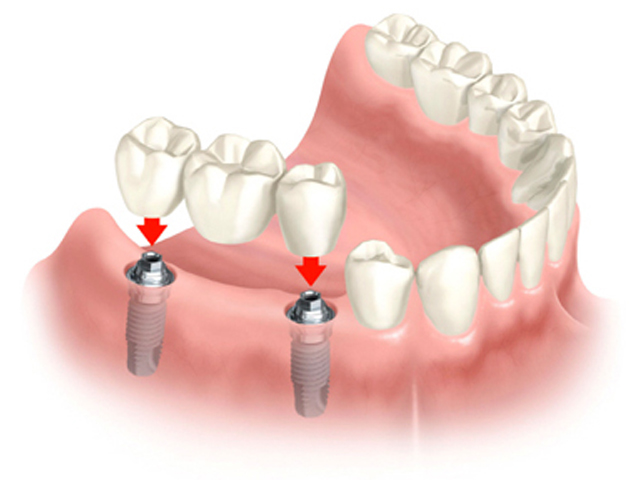Bridges
When a tooth is missing, a replacement tooth can be created to “bridge” the surrounding teeth together. A bridge may replace one or more missing teeth. However, natural, healthy tooth structure will have to be removed from the teeth supporting the bridge, in order for the bridge to fit. This is one reason dental implants may be a preferred treatment for missing teeth.
Bridges are made out of several different materials, and the specific type that Dr. Zane selects depends on various factors. The most common bridges are porcelain fused to metal (PFM) or all ceramic bridges. Unlike all metal bridges, used in the early days of dentistry, both PFM and all ceramic bridges will appear to blend in with your natural smile. Both will be shade matched and contoured, making them indistinguishable from your natural smile. However, porcelain fused to metal bridges contain a layer of porcelain that is bonded to a hard metal. In some cases, over time, the porcelain can wear down or chipping off of the metal.
Because of recent advancements in the durability of ceramic materials, dentist are increasingly turning to all-ceramic bridges as options, even in areas where much stress will be placed on the teeth. In addition, ceramic materials are thought by some to be more biocompatible, which means that they may heal better with surrounding gum tissue and have less effects on the body than bridges containing metal.
